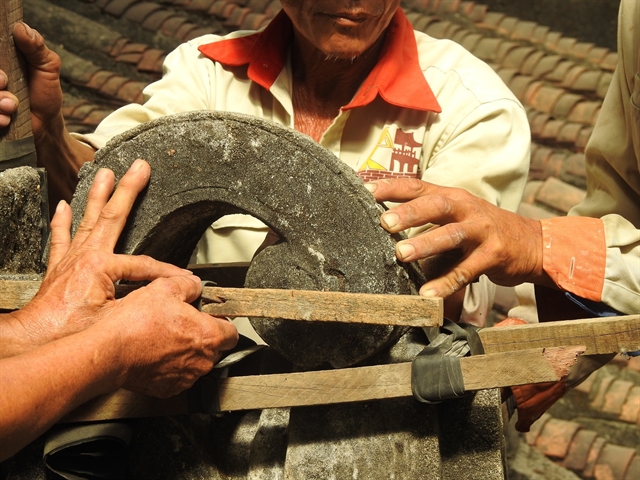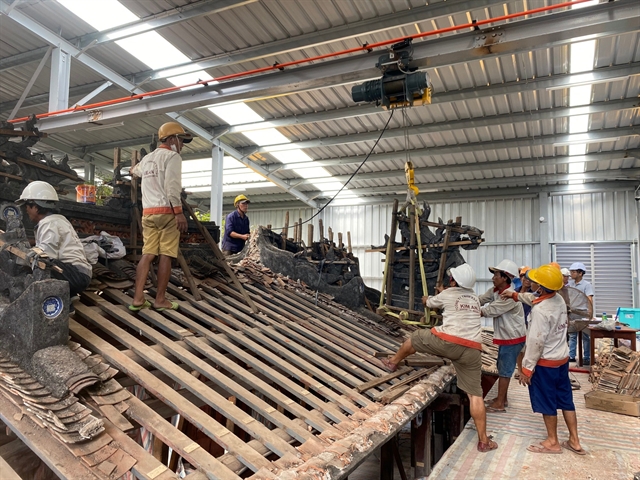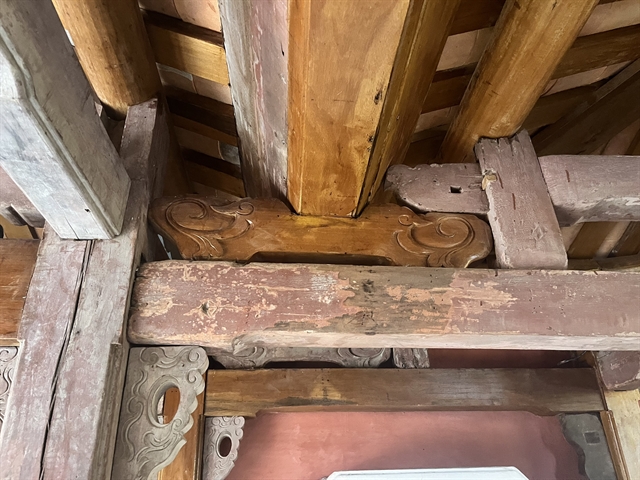 Life & Style
Life & Style

 |
| The Japanese Bridge in Hội An which was built 400 years ago, had undergone seven key restorations. Photo courtesy of Xuân Hà |
HỘI AN — The ancient town has completed a restoration project on Chùa Cầu, or the Japanese Covered Bridge, an iconic bridge and architectural symbol of Hội An, after nineteen months work by Vietnamese and Japanese experts.
 |
| The Japanese Bridge is before restoration. The bridge is an iconic symbol of Hội An a footprint of the Japanese community in the ancient town from 17th century. VNS Photo Cộng Thành |
The bridge, which was sandwiched between Nguyễn Thị Minh Khai and Trần Phú streets, features typical Japanese architecture and is a cultural symbol of Hội An ancient town. It was a favourite site for visitors, but after four centuries needed to be restored under strict and carefully managed laws on heritage and restorative rules.
Director of Hội An's Centre for Cultural Heritage Management, Phạm Phú Ngọc explained that the entire restoration project had been approved by group of Japanese and Vietnamese architects and experts years before restoration works began.
He said the reinstatement ensured keeping the original architecture design and maintaining the historical and cultural value of the heritage, while strengthening the structure to deal with climate change and disasters in the future.
 |
| Workers restore an item on the Japanese Bridge restoration project in Hội An. The bridge had undergone seven restoration times, but it was found seriously damaged in 2012. Photo courtesy of Hội An's Centre for Cultural Heritage Management |
“We preserved quite good items and architectural patterns including the foundation, wood structure, rafters and timbers, roof tiles, brick walls and masonry works,” Ngọc said.
Sixty per cent of the wood and 30 per cent of the roof tiles of the bridge had been preserved and kept after restoration works were completed in late July.
Eighty per cent of the old ceramic dishes and 35 per cent of some decorative patterns on the roof edge were also retained.
 |
| Workers repair and relocate on roof tile items of the Japanese Bridge restoration project. The repair works started in late 2022. Photo courtesy of Hội An's Centre for Cultural Heritage Management |
The centre said that 20 per cent of the stone structure was either reused or repositioned as it had been existed 400 years ago.
Only naturally broken and completely damaged structure or items were changed to similar materials and colours in making the heritage not too ‘new’, the report stated.
Some worm-eaten flood wood panels on the bridge had been changed to new ones, but it was decorated with the same colour as the original design.
Experts said it’s the largest restoration on the bridge following works on seven previous occasions, in 1763, 1817, 1875, 1915, 1962, 1986 and 1996.
 |
| A wood structure on the Japanese Bridge is seen after restoration. Sixty per cent of the wood structural parts were either reused or restored on the bridge. Photo courtesy of Xuân Hà |
The latest repairs had been discussed at an international conference in 2016 – six years before the best-approved solution was chosen for implementation in late 2022.
The bridge is 20.4m long, 5.7m high and 13m wide and hosts 4,000 visitors each day.
Vietnamese and Japanese experts and architecture were called for the best restoration on the bridge after different conferences and discussions.
An agreement on supporting the restoration of the Bridge was signed by Hội An City and the Japan International Cooperation Agency (JICA) in March of 2022.
JICA supported Hội An by sending experts to the city to help restore the bridge and increase local capacity in preserving Hội An Ancient Town's areas with technical support.
Earlier, a waste water treatment station to improve the channel running under the Japanese Bridge was also revitalised using a fund from Japanese and Vietnamese governments.
A book on restorative works of the bridge will be introduced on the inauguration ceremony on August 3 on the occasion of the 20 anniversary of Japan-Hội An Cultural Exchange Day.
The arch bridge is seen as a sword weighing down on the back of a fictional monster that has its head in India with the body in Việt Nam and the tail in Japan. The monster was said to be able to create quakes and disasters and the bridge was built in the hopes of a peaceful life for people in the three countries, according to archives from the Centre for Cultural Heritage Management.
The iconic symbol, which was named Lại Viễn Kiều (the bridge hosting universal visitors) by Lord Nguyễn Phúc Chu of the Nguyễn Dynasty in 1719, has remained a symbol against annual floods over past centuries.
Assoc.Prof,Dr. Shinozaki Masahiko from Architecture Toyo University, who took part in the restoration works on the bridge said: ”People may feel ‘new’ when they see paintings, the roofing tiles, decorations on the roof.
"However, as is often the case with the restoration of cultural heritages, those will be blended in seamlessly and become natural.” VNS




